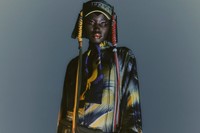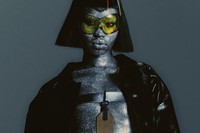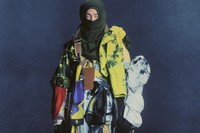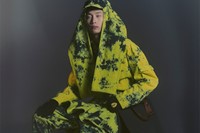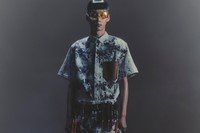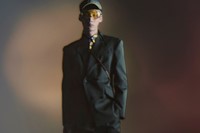Alexander Fury talks to Ferrari creative director Rocco Iannone about upcycling car materials into clothes, the ubiquity of the brand in Italy, and why they are the “haute couture automotive company”
Alexander Fury: The first thing I wanted to ask you – a very natural question – is when did you become aware of Ferrari? What are your earliest memories?
Rocco Iannone: Being an Italian guy, as you can imagine, Ferrari enters your life from the beginning: you start to receive toys of the Ferrari car when you are very young. It’s impossible to avoid Ferrari when you are Italian. But my first real awareness of the brand was when I was 15 years old, playing video games, and then of course all the music and cinema elements. It’s funny that people continue to use Ferrari as an adjective to describe something: it looks like a Ferrari, this is the Ferrari of food, this is the Ferrari of cinema.
AF: I was going to ask you, what does Ferrari mean to you as a name? But as you said, in that context, it’s something used by other people as a mark of excellence.
RI: For me, it means excellence, but excellence that is the result of dedication. Because a lot of people that talk about Ferrari always use the word passion, but passion means a lot of things – if I have to describe passion and what passion means at Ferrari, it’s dedication, how much time and brain and body you put in doing your thing to achieve your results. And this is what I felt entering the company and discovering the company and approaching the brand.
AF: I was going to ask about translating ideas of Ferrari into clothes, but I think you talking about this idea of craftsmanship and dedication, it’s something that automatically for me resonates with fashion: lots of people think it’s just very glamorous, but as soon as you are inside, you realise it takes a lot of work to refine even the simplest thing.
RI: It’s very important to establish that for me, that fashion part was an educational process. I was lucky because the company gave me the chance and the time to approach the brand. So at the beginning I had to establish a direct connection, within the brand and what could be in fashion.
In our case, craft always means research and technology. So for example, the first mission for the product team is always to think about sustainability through the lens of technology – how to give second life to raw materials, how to recycle something that comes from our factory into something new. And this process of research is fascinating, to link the idea of sustainability to technology. That is something you expect from Ferrari.
Now, I think it’s very important to establish a parallel process between automotive and fashion. I’m not looking into the objective results, but into the process. We are the haute couture automotive company, because we do every single car internally by hand. I’m inspired by that process, that dedication. I like the idea that in Italy there is a craft lens to tell a story, but it’s different to the lens of France, for example, where there is the aesthetic; or Germany where there is a functionality. I like to be authentic in what I can offer.
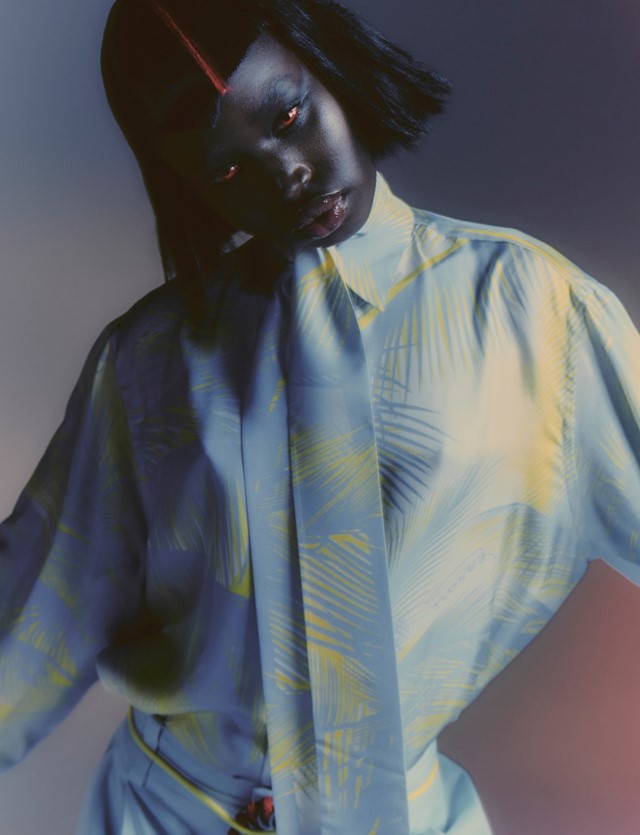
AF: Talking about the craft of Ferrari is obviously different than if you were working in a heritage fashion house. But Ferrari does have a tradition of creation, of craft at a very high level. Is there any crossover in terms of techniques, methods, materials, facilities?
RI: For me, it’s the most fascinating aspect, because the contamination with a different territory is something that can only enrich. Fashion people, we are used to staying in our own landscape, in our world. But instead I think that contamination is very, very interesting and something that I’m discovering season by season also because the company – understanding what we are doing – is opening the doors for us. And so the partnership with our craftspeople on that automotive side is becoming deeper, more interesting.
Leather – how we use leather, the techniques and also how to recycle the elements of leather that they cannot use because they need to cut the surface, so we can transform those small pieces of leather into small leather goods. Research in terms of material finishing and crafts in that sense is very important. We are working on a bag that has a shape … not close to the car, but it has the sinuosity and the colours of the car. And we are brushing that clutch, using the same techniques, the same craftspeople. And talking about sustainability, we are working to recycle the rubber forming the car components through a nylon yarn, with which we create new surfaces in terms of fabric and finishing. And the last one is the carbon fibre. That is a very important material in the automotive industry that we always try to reinterpret in fashion, understanding how to move these rigid materials and how to approach it in the best way.
Giving a second life to materials coming from the automotive world is the most fascinating in terms of creativity – because some of those materials are very difficult to use in fashion. It pushes your boundaries.

